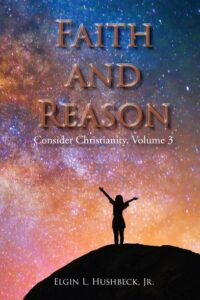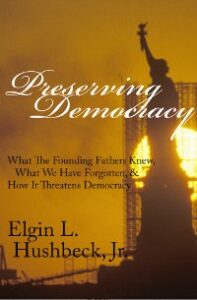Stages of a Political Movement Part I
It is common to hear complaints about how partisan politics have become and question what has happened to the political system. One problem with understanding current events is the differing time spans over which events occur. Events that have short time spans can normally be analyzed and understood, particularly if they occur frequently, so that patterns can be determined and then future reoccurrences understood in light of these pattern. Often times, these patterns are so predicable that these are just taken for granted. For example, because of the pattern of education we are all familiar with in the United States, we expect more from those graduating from High School, than those in 1st grade. The shorter the time span and the more frequently the type of event repeats, the easier it is to see any patterns. When time spans gets longer, particularly when they start involving more than one generation, the patterns gets harder to see. One such pattern involves most human movements that are in competition with each other. These movements go through 5 main stages: Origin, Development, Struggle, Dominance, Decline. While many human institutions can be understood using these stages, here the focus will be on political institutions.
The first stage is Origin, or in some cases rebirth. At this point, the political movement is unfocused and undirected consisting of a grab bag of ideals, principles and beliefs. Most political movements never really get beyond this stage, and even those that do can still be in this stage for many years or even decades. Movements begin to transitions to the next phase when intellectual leaders begin to appear. These intellectual leaders take the mass of ideals, principles and beliefs that are floating around and begin to tie them together into a coherent system. They also use this newly developed coherent system to lay the ground work for a criticism of competing system.
At some point the emerging system will, if it is successful, begin to attract the attention of political leaders. This is the beginning of stage three, as the intellectual movement, which to that point has been relatively free to develop ideals, begins to transition into a political movement that struggles for power. This is an extremely important stage for the more the new movement gains political strength, the more it comes in conflict with the existing powers. If the new political leaders, drawing on the intellectual framework developed in stage two, are persuasive enough, the movement will grow to be a significant power and if successful, the movement will become the dominate position (stage 4). While competition never goes completely away, in this stage the movement has enough power that it can enact most of its programs.
The world is not static and just as the movement challenged and eventually overthrew the old status quo, there will arise new challengers to the movement. Should these succeed, and so far history has show that eventually one will, the movement enters into the last stage, that of decline. If the decline is great enough, the movement dissolves back into the general ocean of ideals that composes stage one to await a rebirth.
Thus one way to look at the current political conflict is not just as a struggle between two political parties (Republican and Democrat) but also a struggle between two (or more) political movements which are at different stages of development and whose time span covers decades. The liberal movement (using the current understanding of the term) was in struggle phase (phase 3) prior to coming to dominance with FDR in the 1930s. With the corresponding decline of the Republican party at that time, some began to seek new direction. The 1940s and 1950 saw the development of a new intellectual movement of conservatism, which then began to attract political leaders. 1964 was a hallmark year for the new political movement which saw the nomination of a conservative (Goldwater) for president, and the emergence of another conservative political leader on the national stage, Ronald Regan. Still the dominance of the liberalism continued. More importantly the dominance was pervasive. Not only did liberalism dominate politics, but also the media, both entertainment and news, and universities. Even when Republicans won the Presidency, they often enacted liberal policies and thus partisanship was minimized.
The first major victory for the fledgling conservative movement came with the presidency of Ronald Reagan in 1980s. Regan broke the political dominance that liberalism had enjoyed since the 1930s. Still the Democrats still had a lock on the House and at times control of the Senate. And while conservatism came to dominate the Republican party, there were still many detractors within the party, particularly among elected officials, given the difficulty in removing incumbents. So Reagan did not bring conservatism to dominance, and the struggle continued. The second major victory came in 1994 when the Republicans led by conservatives, gained control of the House of Representatives for the first time since the early 1950s. Even when the Republicans had control of both houses of the congress and the presidency in 2002, conservatives could not be said to have a dominance given the slim margin in the Senate and its 60 vote requirement to move legislation.
Thus the increased partisanship at the moment which some label ‘the worst they have seen’ can simply be understood as the natural result of the dominance of the liberals being broken and the subsequent struggle for power between Liberals and conservatives. But there is an addition factor resulting from these five stages the greatly contributes to the current partisanship which I will look at next time.

